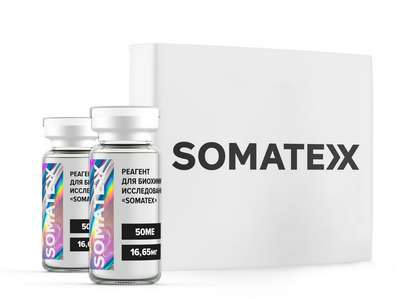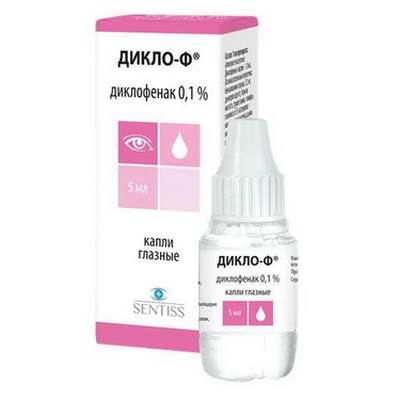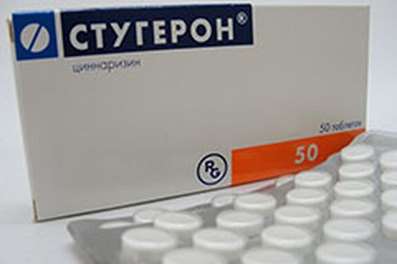Instruction for use: Mepivacaine
I want this, give me price
Latin name of substance Mepivacaine
Mepivacainum (genus. Mepivacaini)
Chemical name
N- (2,6-Dimethylphenyl) -1-methyl-2-piperidinecarboxamide (as hydrochloride)
Gross formula
C15H22N2O
Pharmacological group:
Local Anesthetics
The nosological classification (ICD-10)
R52 Pain, not elsewhere classified: Pain syndrome of radicular origin; Pain syndrome of small and medium intensity of different genesis; Pain syndrome after orthopedic surgery; Pain syndrome in superficial pathological processes; Radicular pain in the background of osteochondrosis of the spine; Radicular pain syndrome; Pleural pain; Chronic pain
Z01.8 Other specified special examination: Anesthesia of mucous membranes; Preoperative examination
Z100.0 * Anesthesiology and premedication: Abdominal surgery; Adenomectomy; Amputation; Angioplasty of the coronary arteries; Carotid artery angioplasty; Antiseptic treatment of skin in wounds; Antiseptic treatment of hands; Appendectomy; Atheroctomy; Balloon coronary angioplasty; Vaginal hysterectomy; Venous bypass; Interventions on the vagina and cervix; Interventions on the bladder; Interference in the oral cavity; Reconstructive-reconstructive operations; Hand hygiene of medical personnel; Gynecological Surgery; Gynecological interventions; Gynecological operations; Hypovolemic shock during surgery; Disinfection of purulent wounds; Disinfection of the edges of wounds; Diagnostic Interventions; Diagnostic procedures; Diathermocoagulation of the cervix; Long-term surgeries; Replacement of fistulous catheters; Infection in orthopedic surgical interventions; Artificial heart valve; Kistectomy; Short-term outpatient surgery; Short-term operations; Short-term surgical procedures; Cryotyreotomy; Blood loss during surgical interventions; Bleeding during surgery and in the postoperative period; Kuldotsentez; Laser coagulation; Laserocoagulation; Laser retinopathy of the retina; Laparoscopy; Laparoscopy in gynecology; Likvornaya fistula; Small gynecological operations; Small surgical interventions; Mastectomy and subsequent plastic surgery; Mediastinotomy; Microsurgical operations on the ear; Mukinging operations; Suturing; Minor surgery; Neurosurgical operation; Eclipse of the eyeball in ophthalmic surgery Orchiectomy; Pancreatectomy; Pericardectomy; The rehabilitation period after surgical operations; Reconvalence after surgical intervention; Percutaneous transluminal coronary angioplasty; Pleural Thoracocentesis; Pneumonia postoperative and post traumatic; Preparing for surgical procedures; Preparing for a surgical operation; Preparation of the surgeon's arms before surgery; Preparation of the colon for surgical interventions; Postoperative aspiration pneumonia in neurosurgical and thoracic operations; Postoperative nausea; Postoperative hemorrhage; Postoperative granuloma; Postoperative shock; Early postoperative period; Myocardial revascularization; Resection of the apex of the tooth root; Resection of the stomach; Bowel resection; Resection of the uterus; Liver resection; Small bowel resection; Resection of a part of the stomach; Reocclusion of the operated vessel; Gluing of tissues during surgical interventions; Suture removal; Condition after eye surgery; Condition after surgery; Condition after surgery in the nasal cavity;Condition after gastrectomy; Condition after resection of the small intestine; Condition after tonsillectomy; Condition after removal of duodenum; Condition after phlebectomy; Vascular Surgery; Splenectomy; Sterilization of surgical instrument; Sterilization of surgical instruments; Sternotomy; Dental surgery; Dental intervention on periodontal tissues; Strumectomy; Tonsillectomy; Thoracic surgery; Total gastrectomy; Transdermal intravascular coronary angioplasty; Transurethral resection; Turbinectomy; Removal of a tooth; Cataract removal; Removing Cysts; Removal of tonsils; Removal of myoma; Removal of mobile milk teeth; Removal of polyps; Removal of a broken tooth; Removal of the uterus; Removal of seams; Urethrotomy; Fistula of the luminal ducts; Frontoetmoidohaimorotomy; Surgical infection; Surgical treatment of chronic ulcers of extremities; Surgery; Surgery in the anus; Surgery on the large intestine; Surgical practice; Surgical procedure; Surgical interventions; Surgical interventions on the digestive tract; Surgical interventions on the urinary tract;Surgical interventions on the urinary system; Surgical interventions on the genitourinary system; Surgical intervention on the heart; Surgical procedures; Surgical operations; Surgical operations on veins; Surgical intervention; Vascular; Cholecystectomy; Partial resection of the stomach; Extraperitoneal hysterectomy; Percutaneous transluminal coronary angioplasty; Percutaneous transluminal angioplasty; Coronary artery bypass grafting; Extirpation of the tooth; Extirpation of infant teeth; Extirpation of pulp; Extracorporeal circulation; Extraction of the tooth; Extraction of teeth; Extraction of cataracts; Electrocoagulation; Endourological interventions; Episiotomy; Ethmoidotomy; Complications after tooth extraction
Z40 Preventive Surgery: Inhalational Anesthesia; Intratracheal Intubation; Intubation of the trachea; Surface anesthesia in ophthalmology
CAS code
22801-44-1
Characteristics of Mepivacaine
Anesthetic of the amide type.
Mepivacaine hydrochloride is a white, crystalline powder, odorless. It is soluble in water, resistant to both acidic and alkaline hydrolysis.
Pharmacology
Pharmacological action - local anesthetic.
Being a weak lipophilic base, it passes through the lipid layer of the membrane of the nerve cell and, passing into the cationic form, binds to the receptors (remnants of the S6 transmembrane spiral domains) of the sodium channels of the membranes located in the terminals of the sensory nerves. Reversibly blocks the potential-dependent sodium channels, prevents the current of sodium ions through the cell membrane, stabilizes the membrane, increases the threshold of electrical stimulation of the nerve, reduces the rate of occurrence of the action potential and lowers its amplitude, eventually blocks the depolarization of the membrane, the emergence and carrying out of a pulse along nerve fibers.
Causes all kinds of local anesthesia: terminal, infiltration, conductive. Has a quick and powerful effect.
When entering the systemic circulation (and creating toxic concentrations in the blood) may have a depressing effect on the central nervous system and the myocardium (however, when applied in therapeutic doses, changes in conductivity, excitability, automatism, etc. are minimal).
The dissociation constant (pKa) is 7.6; solubility in fats is average. The degree of systemic absorption and plasma concentration depends on the dose, the mode of administration, the vascularization of the injection site, and the presence or absence of epinephrine in the anesthetic solution. Adding a diluted epinephrine solution (1: 200,000, or 5 μg / ml) to mepivacaine solution usually reduces the absorption of mepivacaine and its concentration in the plasma. Binding to plasma proteins is high (about 75%). Penetrates through the placenta. Not exposed to the action of plasma esterases. Rapidly metabolized in the liver, the main ways of metabolism - hydroxylation and N-demethylation. Adults identified 3 metabolites - two phenolic derivatives (excreted as glucuronides) and an N-demethylated metabolite (2 ', 6'-pipecyloxylidide). T1 / 2 in adults - 1.9-3.2 hours; in newborns - 8,7-9 hours. More than 50% of the dose in the form of metabolites is excreted into bile, then reabsorbed in the intestine (a small percentage is found in feces) and is excreted in urine after 30 h, including. in unchanged form (5-10%). Cumulates when a violation of the liver (cirrhosis, hepatitis).
Loss of sensitivity is noted after 3-20 minutes. Anesthesia lasts 45-180 minutes. The time parameters of anesthesia (start time and duration) depend on the type of anesthesia, the technique used, the concentration of the solution (dose of the drug), and the individual characteristics of the patient. Addition of solutions of vasoconstrictors is accompanied by prolongation of anesthesia.
Studies to assess carcinogenicity, mutagenicity, effects on fertility in animals and humans have not been carried out.
Application of the Mepivacaine
Local anesthesia with interventions in the oral cavity (all types), intubation of the trachea, broncho- and esophagoscopy, tonsillectomy, etc.
Contraindications
Hypersensitivity, incl. to other amide anesthetics; old age, severe myasthenia gravis, severe liver function disorders (including cirrhosis of the liver), porphyria.
Restrictions on the use
Pregnancy, breast-feeding.
Application in pregnancy and lactation
When pregnancy is possible, if the expected effect of therapy exceeds the potential risk to the fetus (may cause a narrowing of the uterine artery and fetal hypoxia). With caution in the period of breastfeeding (no data on penetration into breast milk).
Side effects of Mepivacaine
From the nervous system and sensory organs: agitation and / or depression, headache, ringing in the ears, weakness; violation of speech, swallowing, sight; convulsions, coma.
From the cardiovascular system and blood (hematopoiesis, hemostasis): hypotension (or sometimes hypertension), bradycardia, ventricular arrhythmia, cardiac arrest is possible.
Allergic reactions: sneezing, hives, pruritis, erythema, chills, fever, Quincke's edema.
Other: depression of the respiratory center, nausea, vomiting.
Interaction
Beta-adrenoblockers, calcium channel blockers, antiarrhythmic drugs increase the inhibitory effect on conduction and contractility of the myocardium.
Overdose
Symptoms: hypotension, arrhythmia, increased muscle tone, loss of consciousness, convulsions, hypoxia, hypercapnia, respiratory and metabolic acidosis, dyspnea, apnea, cardiac arrest.
Treatment: hyperventilation, maintenance of adequate oxygenation, auxiliary respiration, arresting convulsions and convulsions
(administration of thiopental 50-100 mg IV or diazepam 5-10 mg IV), normalization of blood circulation, correction of acidosis.
Routes of administration
Parenteral.
Precautions for the substance Mepivacaine
With caution appoint patients with hepatitis, cirrhosis, liver failure, severe renal dysfunction, acidosis.
Special instructions
It is not recommended for subarachnoid (spinal) anesthesia.

 Cart
Cart





